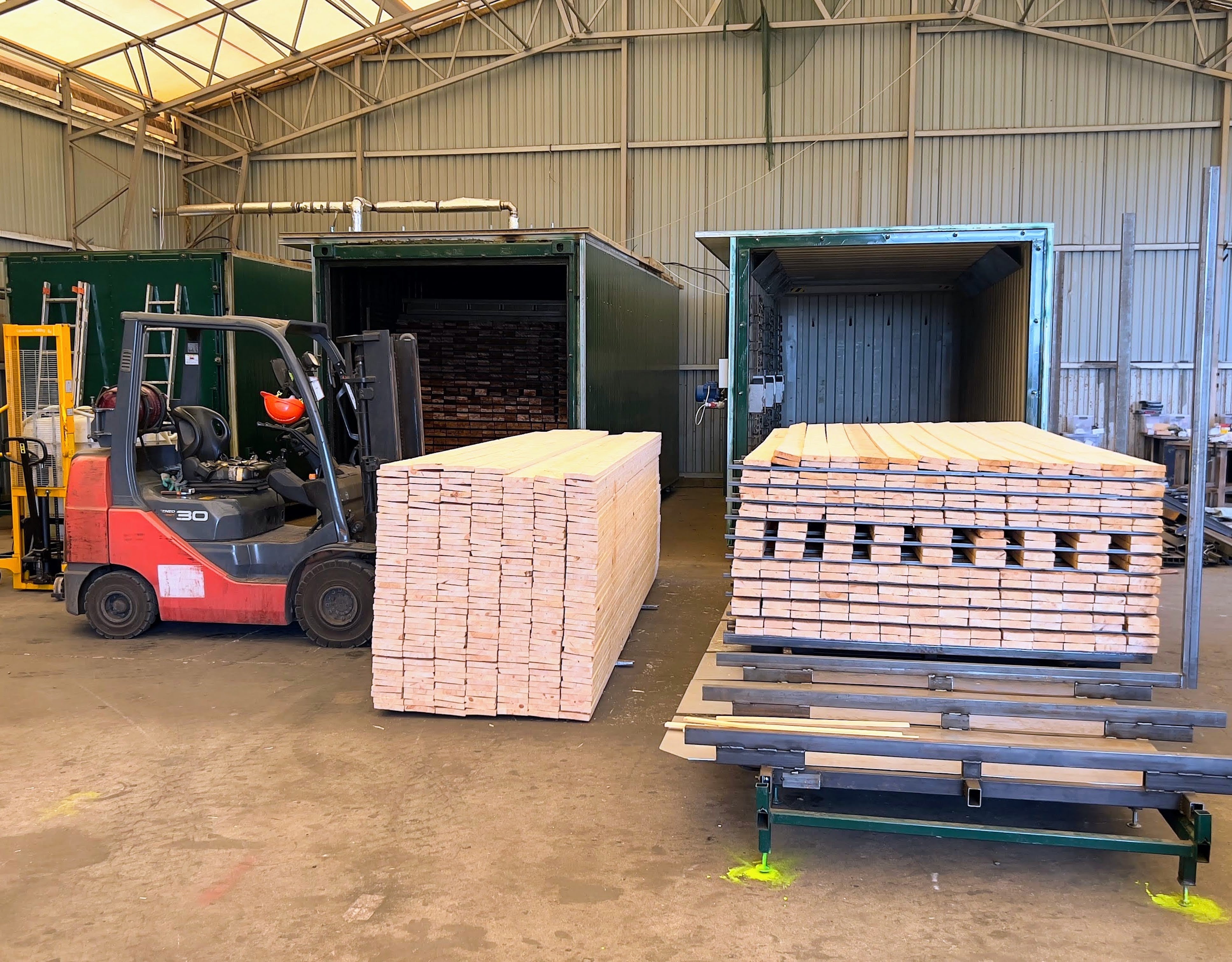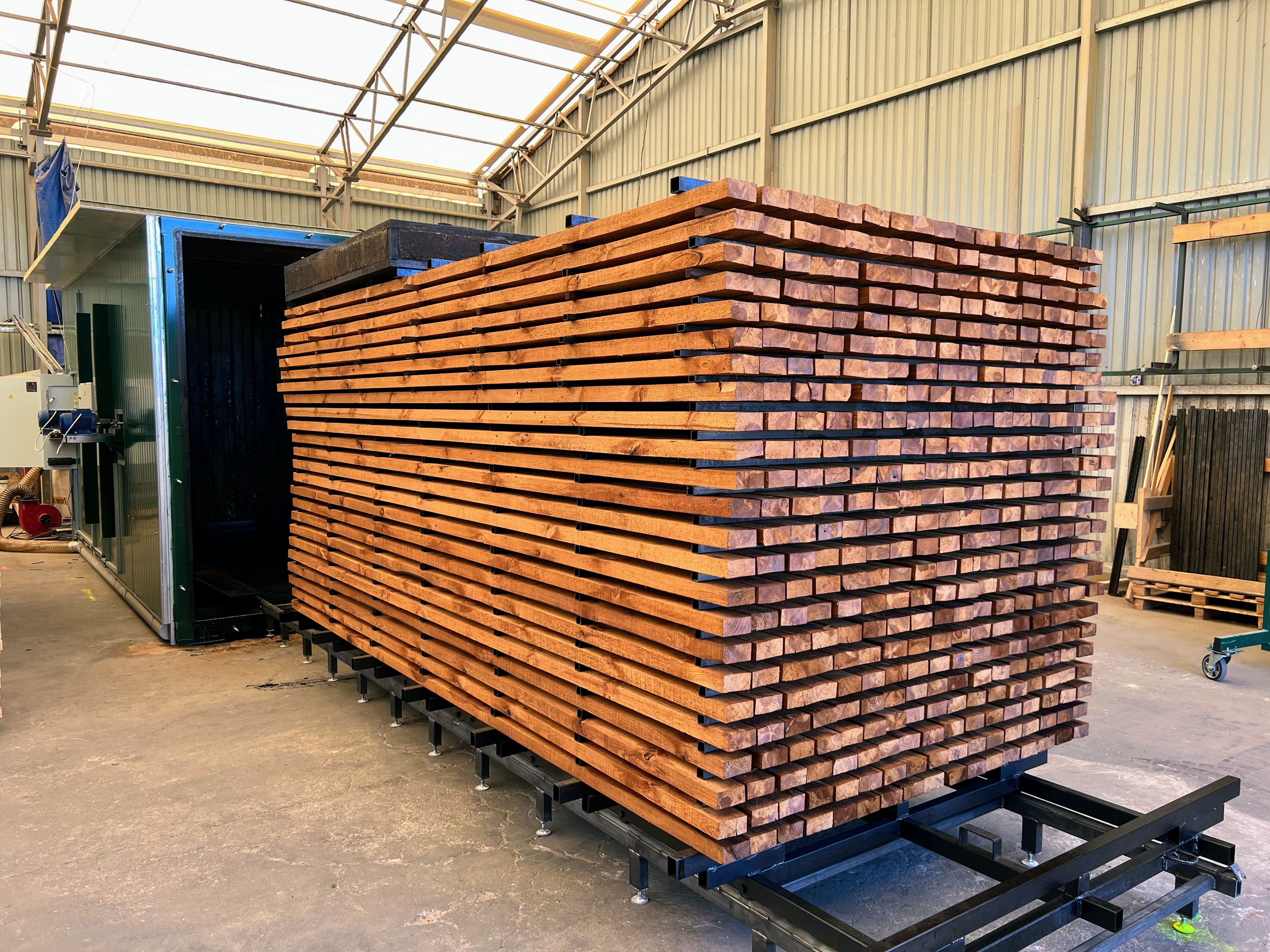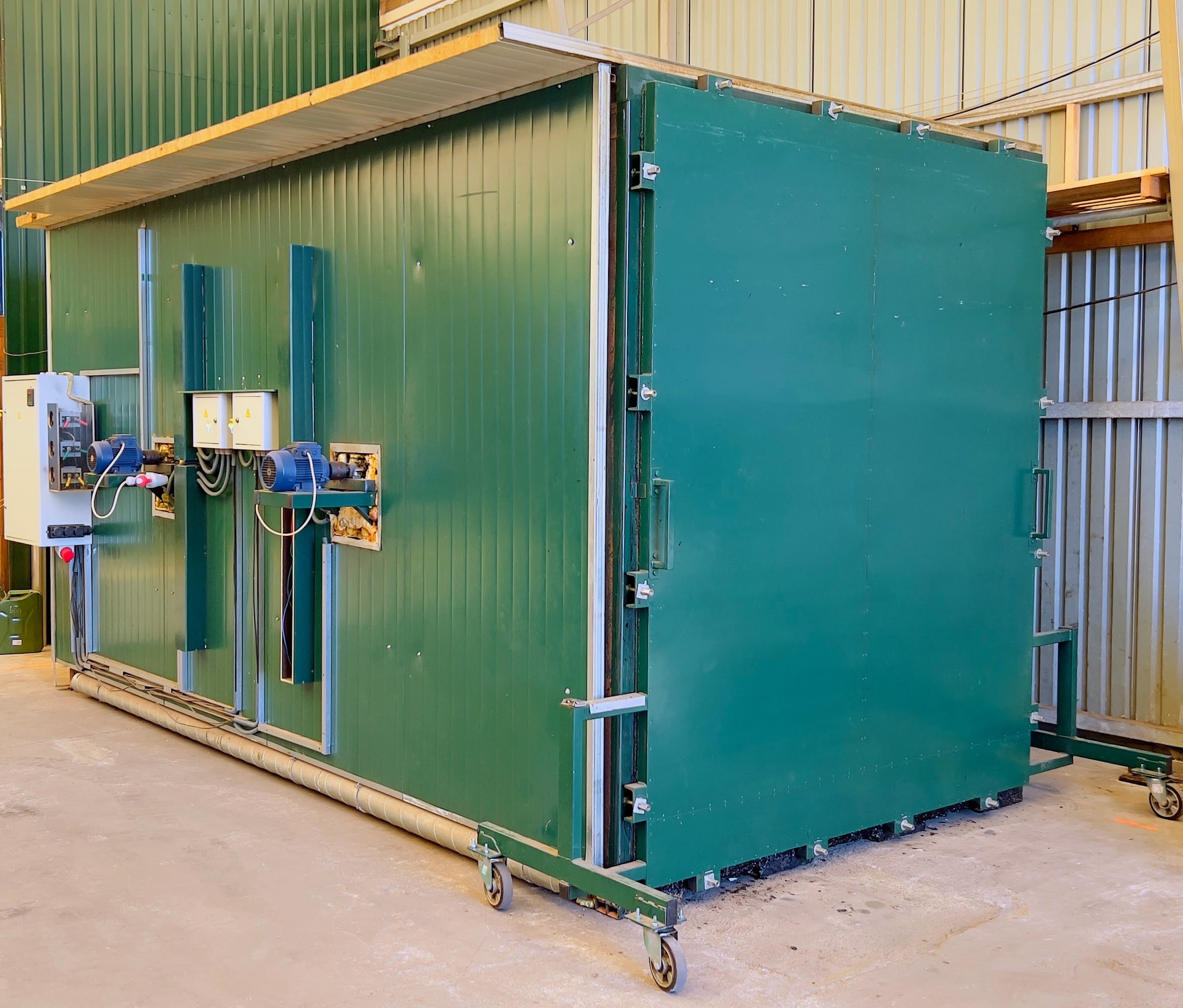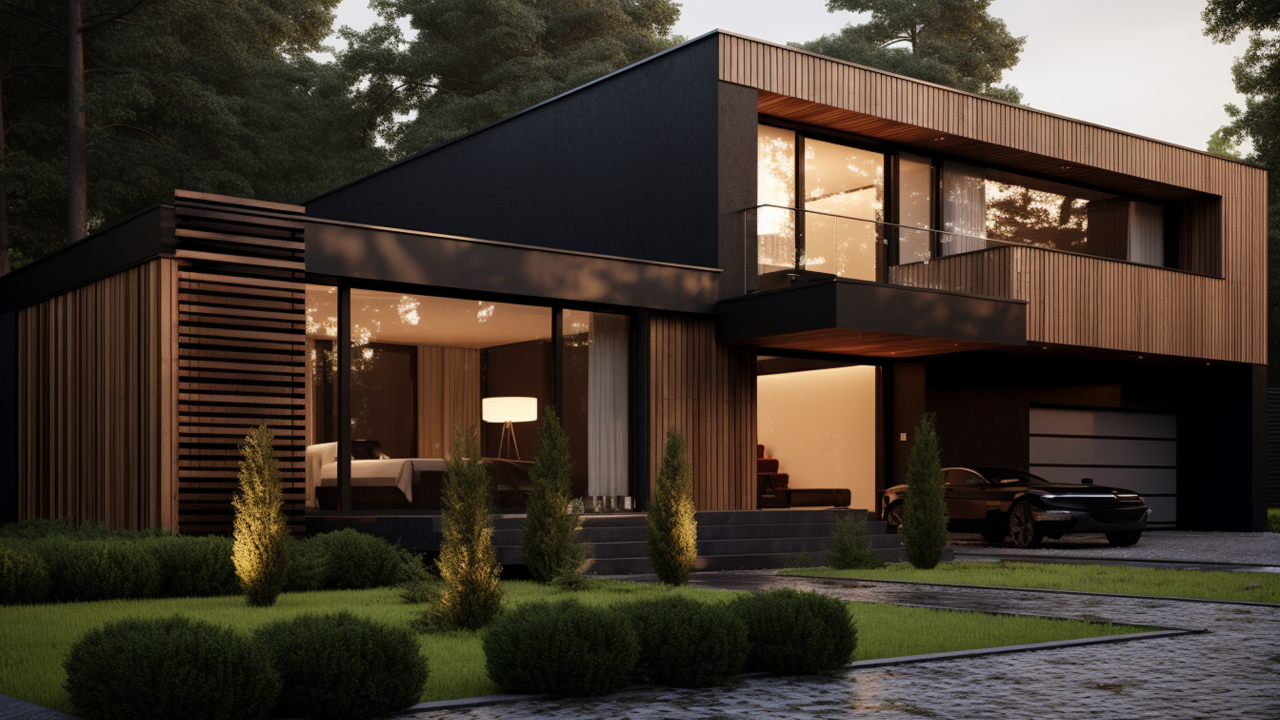The most popular questions from our customers
How much does the thermal modification of wood cost?
This wood treatment is the best and only 100% ecological protection method that does not require re-use. The processes that take place in wood after thermal modification are irreversible. Products made of thermally modified wood are usually 1.5-2 times more expensive than similar products using vacuum impregnation.
What types of wood can be thermally modified?
The thermal modification method is suitable for many types of wood. The process needs to be individually optimized for each type of wood, taking into account its geometric dimensions.
Does the strength of wood decrease after thermal modification?
Generally, the strength of wood is directly related to its density. However, after thermal modification, the ratio of weight and strength practically does not change.
Is it true that thermally modified wood is not durable and brittle?
Thermally modified wood is less resistant to decay. The higher the heat treatment temperature, the lower the resistance to cracking (on average it decreased by 30-40%). Therefore, we recommend pre-drilling.
How does thermally modified wood absorb moisture?
Thermal modification reduces the equilibrium moisture content of the wood. Under the influence of the highest temperatures, the moisture content can be 40-50% lower compared to untreated wood. Thermal modification significantly reduces radial swelling in the tangential plane of the wood. In addition, thermally modified wood does not experience stress during drying, its compression and swelling levels are very low. In addition, the thermal modification process reduces water absorption by 20-30%.
How durable is thermally modified wood?
Standard tests (EN113, ENV 807) performed under laboratory conditions have shown a significant improvement in bioresistance and greater biodurability due to the removal of natural food sources from the wood, as well as changes in the chemical and structural composition of the wood. . As a result, the service life is 3-5 times longer compared to ordinary wood.
Does UV radiation affect thermally modified wood?
Like most natural materials, such wood cannot withstand ultraviolet rays. Under the influence of direct sunlight, the color of the wood changes from the original brown to gray over time. The original color can be preserved by using pigment-containing preservatives or UV filters.
Is the wood weather resistant?
During 5 years of use, thermally modified wood is exposed to weathering, and the natural moisture content is half that of untreated wood. Due to natural atmospheric conditions, mold can grow on the surface of thermally modified wood. This phenomenon occurs with all materials operating under natural atmospheric conditions. Mold can appear on untreated surfaces due to airborne bacteria or dirt carried by rain. However, this is only noticeable on the surface and can be removed by wiping or scraping.
Optimal thermally modified wood protective coating systems include: oil based primer and topcoat or solvent based alkyd topcoat or waterborne acrylic topcoat.
Is thermally modified wood toxic?
Thermally modified wood does not contain any toxic or harmful components. Such wood has even been tested as a bone substitute. However, if splinters get under the skin, they should be removed as soon as possible, similar to untreated wood.
What is the fire safety of thermally modified wood?
In terms of fire safety, thermally modified wood does not have much difference compared to untreated wood.
Contact us
Do you have any questions?
If you didn't find the answer to your question in our FAQ, you can send us a message by filling out the form below.



